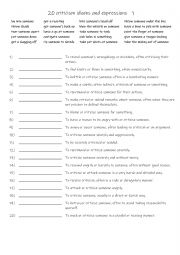
|
B1+-C1 20 criticism idioms and expressions 1
First, students need to familiarise themselves with the 20 idioms and expressions and their meanings. Then they read the definitions to see which one is being described and write that word in the space provided Answers on page 2.
Level: intermediate
Age: 12-100
Type:
Downloads: 126
|
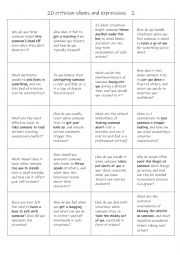
|
B1+-C1 20 criticism idioms and expressions 2
This is a speaking reinforcement activity to supplement the other worksheet I uploaded on 9 / 1 / 2025. Students working in pairs or small groups can either ask each other the questions or answer the question themselves.
Level: intermediate
Age: 12-100
Type:
Downloads: 110
|
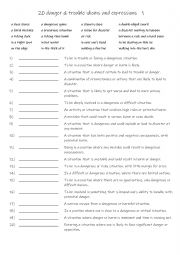
|
B1+-C1 20 danger & trouble idioms and expressions 1
Learning danger and trouble idioms offers numerous benefits. It enhances comprehension by helping students understand common expressions in everyday conversation and media. These idioms provide cultural insights, showing how native speakers view risk and challenges. They also allow students to express complex ideas concisely and vividly, making the...
Level: intermediate
Age: 12-100
Type:
Downloads: 113
|
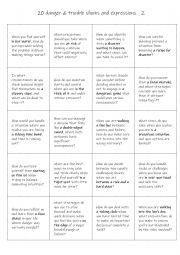
|
B1+-C1 20 danger & trouble idioms and expressions 2
This is a speaking reinforcement activity to supplement the other worksheet I uploaded on 29/12/2024. Students working in pairs or small groups can either ask each other the questions or answer the question themselves.
Level: intermediate
Age: 12-100
Type:
Downloads: 111
|

|
B1+-C1 20 idioms and expressions for cost 1
Learning expressions related to money, such as at a price, be on the house, break the bank, burn a hole in one�s pocket, and others, is important because these idioms enrich students� vocabulary and make their language more natural and expressive. They are commonly used in conversations about spending, saving, and financial matters, helping stude...
Level: intermediate
Age: 12-100
Type:
Downloads: 106
|
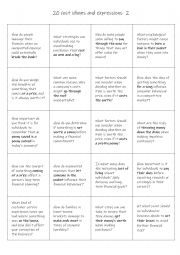
|
B1+-C1 20 idioms and expressions for cost 2
This is a speaking reinforcement activity to supplement the other worksheet I uploaded on 9 / 1 / 2025. Students working in pairs or small groups can either ask each other the questions or answer the question themselves.
Level: intermediate
Age: 12-100
Type:
Downloads: 104
|
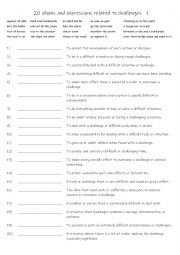
|
B1+-C1 20 idioms and expressions related to challenges 1
First, students need to familiarise themselves with the 20 idioms and expressions and their meanings. Then they read the definitions to see which one is being described and write that word in the space provided Answers on page 2.
Level: intermediate
Age: 12-100
Type:
Downloads: 118
|
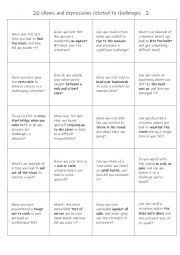
|
B1+-C1 20 idioms and expressions related to challenges 2
This is a speaking reinforcement activity to supplement the other worksheet I uploaded on 22/1/2025. Students working in pairs or small groups can either ask each other the questions or answer the question themselves.
Level: intermediate
Age: 11-100
Type:
Downloads: 117
|
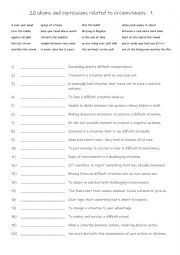
|
B1+-C1 20 idioms and expressions related to circumstances 1
First, students need to familiarise themselves with the 20 idioms and expressions and their meanings. Then they read the definitions to see which one is being described and write that word in the space provided Answers on page 2.
Level: intermediate
Age: 11-100
Type:
Downloads: 115
|
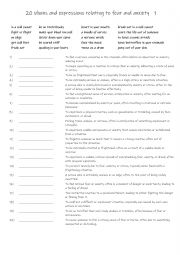
|
B1+-C1 20 idioms and expressions relating to fear and anxiety 1
First, students need to familiarise themselves with the 20 idioms and expressions and their meanings. Then they read the definitions to see which one is being described and write that word in the space provided Answers on page 2.
Level: intermediate
Age: 13-100
Type:
Downloads: 141
|












